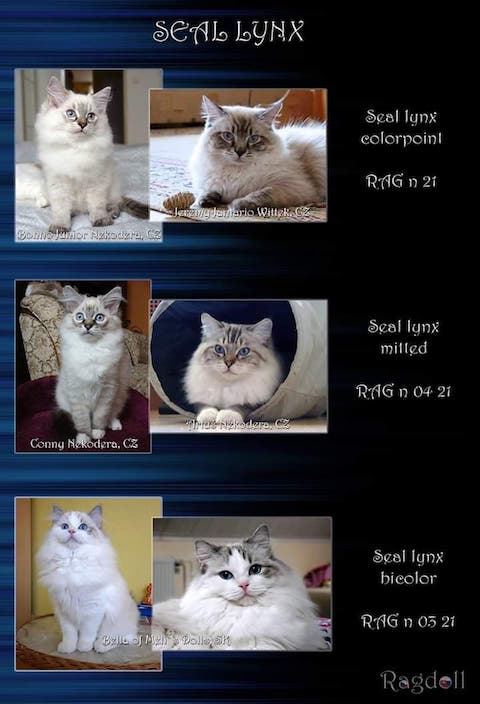General Description:
The beauty of the Ragdoll is only one of their many features. Their disposition and personality are what makes them a truly unique cat. They are quiet, playful, placid, relaxed and very loving. They make a wonderful house or apartment cat. Because they adapt well to the indoors. A Ragdoll should never be left outside unattended. They can be easily leash trained, however, it is recommended that they stay in the house at all times, so they don’t get a taste of the outdoors, and then try to sneak out whenever the doors are opened, especially with children in the house.
Ragdolls are docile, large and affectionate and respond well to children and other pets. Ragdolls and dogs do especially well together if the dog is well mannered. Children should be watched around a Ragdoll kitten, but most Ragdolls raised with children will tolerate being “lugged” around the house and be happy to be played with.
Ragdolls are slow to mature physically obtaining full maturity between 3 and 4 years of age. Altered adult males may reach 15 to 20 pounds; females will weigh about 5 pounds less.
The Ragdoll's fur is rabbit-like, medium long with LITTLE shedding. Remember, all animals, including humans do shed their fur, so expect some shedding in the spring and fall. What is nice about the Ragdoll fur is that it is very easy to pick up. It is so soft that it just sits on top of the surface instead of working it’s way into fabric and is therefore easy to pick up. Just a damp hand, or rag will lift most hair off your clothes. The Ragdoll requires little or no routine grooming. During shedding season, be sure to watch for some tangles under the armpits in some Ragdolls. All pointed Ragdolls have beautiful blue eyes.
Body:
Head: medium in size, broad
modified wedge, with slightly rounded contours
Eyes: blue, big and oval
Ears: medium in size, continuation
of modified wedge, broad at base, slight tilt
forward
Muzzle: round, medium in length
Body: medium to large, muscular,
long and substantial with full chest, rump slightly
higher than shoulders, shoulder blades broad
Legs: medium length, in proportion
to body, hind legs slightly higher than front legs
Tail: long, equal to body length
from rump, medium at base with a slight taper
Coat: semi-long, silky, plush
Coat:
Ragdoll kittens are born completely white and their ears, legs and tails start to darken only about two days later. The coat continues to darken with age.
Ragdoll can have four basic colours:
seal – dark brown - n
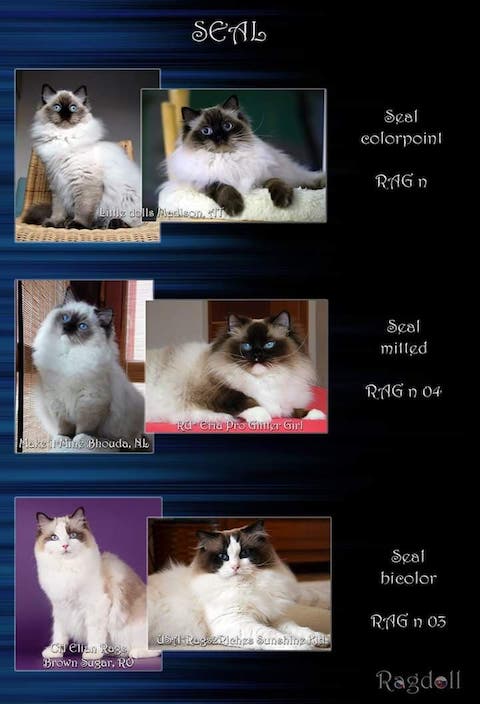
blue – slate gray - a
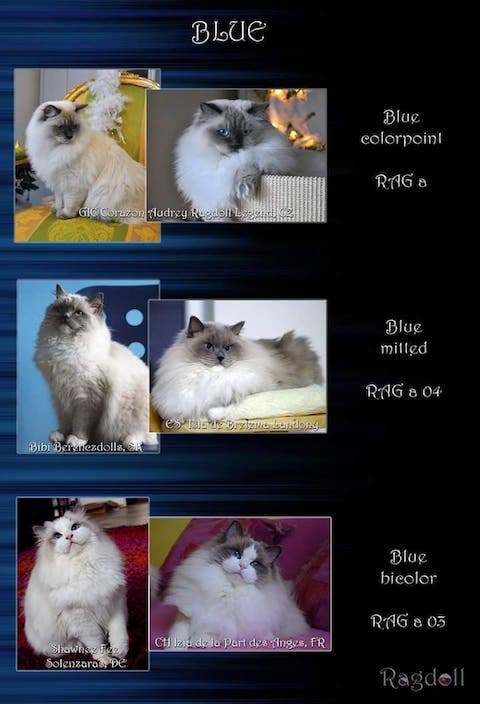
chocolate – milky brown - b
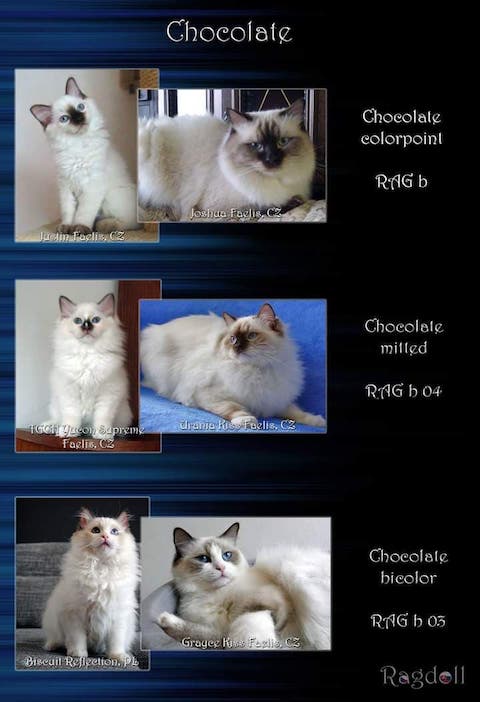
lilac – warm sandy - c
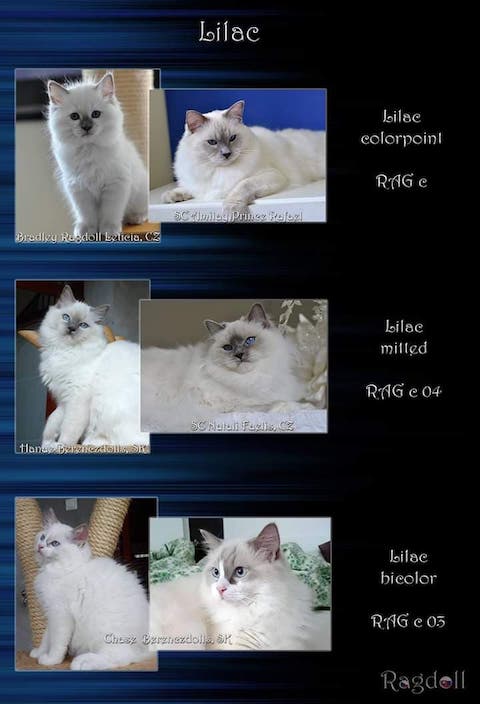
Recently accepted colours are:
red – creamy white with orange red
points - d
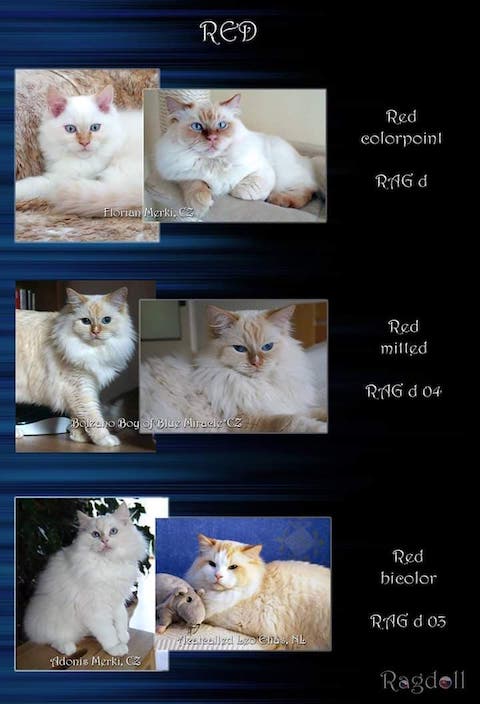
creme – lighter warm orange - e
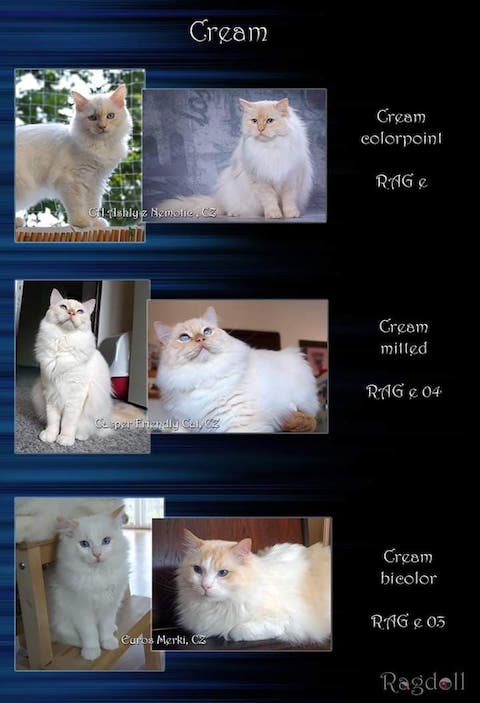
seal tortie – black tabby
markings - f
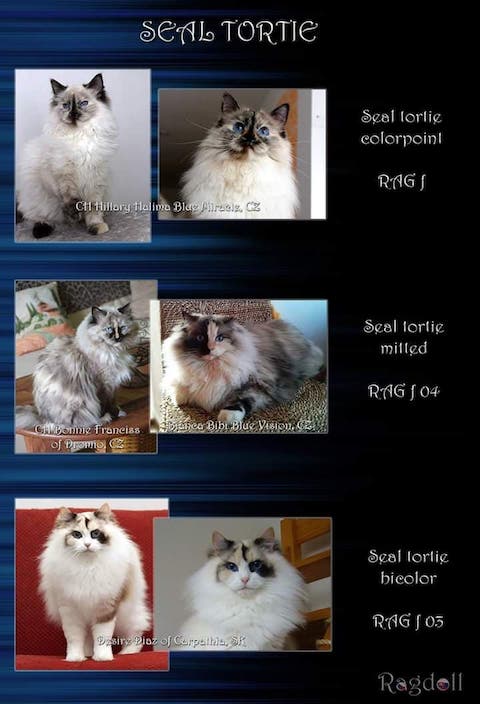
blue cream tortie – blue-cream
tabby markings - g
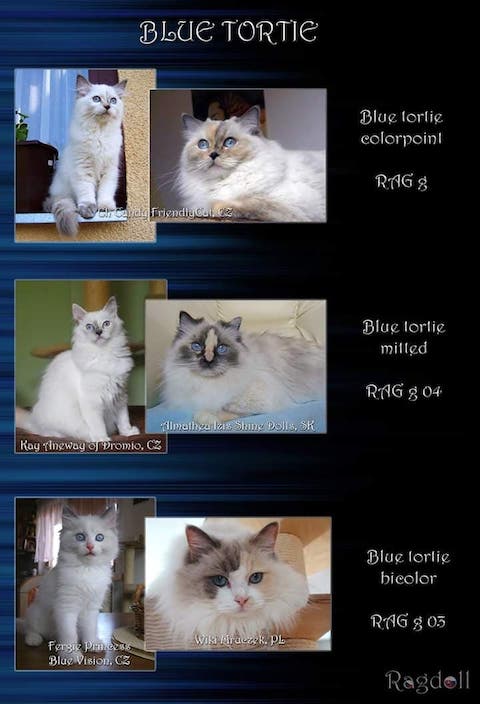
chocolate tortie – chocolate
tabby markings - h
lilac cream tortie – lilac cream
tabby markings- j
Ragdolls can have three patterns:
colourpoint: body color of a shade
lighter than their point color
mitted: mittens on all four paws -
04
bicolour: a white inverted "V" as
their face mask - 03
lynx : striping that occurs within
the cat's color - 21
torbie : cats who carry the red
gene, causing their color to be mixed in with red or
cream
From www.rfci.org
